Soviet anti-tank grenade launchers. Part 2
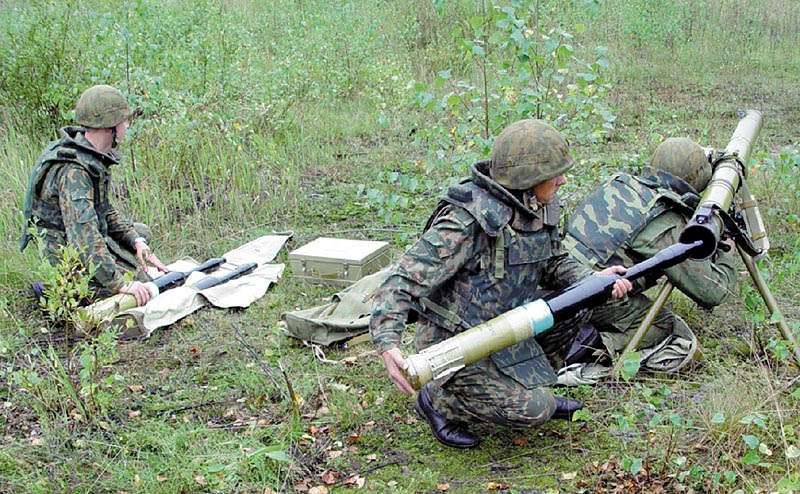
By the beginning of the 70-ies of the XX century in the arsenal of the Soviet infantry consisted of very effective samples of reusable hand and machine-gun anti-tank grenade launchers. Each motorized infantry unit had a grenade launcher armed with an RPG-2 or RPG-7, the battalion’s anti-tank defense was provided by the LNG-9 and the portable “Malyutka” ATGM.
However, individual anti-tank individual motorized infantry still, as in the war years, remained anti-tank grenades RKG-3. This manually fired ammunition was designed to destroy armored vehicles using a shaped charge.
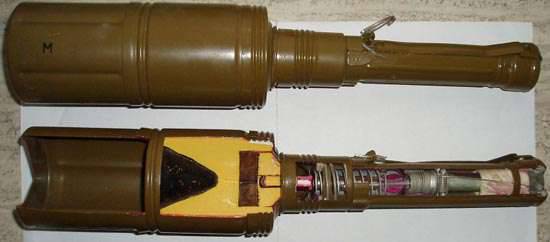
A well-trained fighter could throw an RCG-3 weighing more than 1 kg over a distance of 15-20 meters. Stabilization of the RKG-3 in flight with the head part forward was carried out by a special parachute of the characteristic elongated shape. This anti-tank grenade, which, depending on the modification, had 170-220 mm armor penetration, was a great danger for the grenade launcher itself, and according to the instructions, it could only be used from shelter. It is clear that in real combat, the soldiers thought less about everything about the personal security during the destruction of the enemy armored vehicles that had broken through, and the use of powerful hand-held anti-tank grenades inevitably led to heavy casualties among the personnel.
In the 1967 year, the Basalt and the TsKIB SOO for the replacement of the manual cumulative grenades RKG-3 began the development of the RPU-18 disposable rocket grenades “Fly”, in 1972 it was put into service. Many researchers are inclined to believe that the creation of the RPG-18 was launched after samples of the American M72 LAW disposable grenade launcher captured in Vietnam were brought to the Soviet Union. It is hard to say whether this was really so, but in the layout and a number of constructive decisions, Mukha had a lot in common with the American grenade launcher.

The reader may wonder why M72 LAW is considered a grenade launcher in the American army, and in our RPG-18 is considered to be a grenade? In fact, the difference between these very similar in their capabilities and structurally similar samples is only in the name. In the Soviet Army, a disposable RPG-18 was not assigned to armament, but to off-nominal ammunition in order to facilitate the process of counting and decommissioning, since it was much easier to write off an anti-tank grenade used or lost during combat operations or exercises.
The launch of the RPG-18 jet grenade with a cumulative warhead of 64 mm caliber takes place in the barrel of a disposable trigger device. Until the moment of the departure of the grenade from the barrel, a full combustion of the starting powder charge takes place. Unlike PG-7 and PG-9, the cumulative RPG-18 grenade after ejecting from the barrel with an initial speed of 115 m / s, then flies only by inertia, without acceleration by a sustained jet engine. This circumstance predetermined a relatively short range of shooting - 150 meters. That, however, is 8-10 times the possible throw range of a hand-made cumulative Grenade GKG-3. In terms of armor penetration - 300 mm normal homogeneous armor, the RPG-18 also surpassed the GSC-3. With a mass of 2,6 kg, a disposable reactive “Fly” is about twice as heavy as the RCG-3, with a much higher efficiency. The length of the RPG-18 in the cocked combat position is - 1050 mm, in the marching position - 705 mm.
The undermining of the cumulative charge of the “okfol” explosive (plasticized octogen) with a mass of 312 g, when hit the target, is produced by an instantaneous piezoelectric fuse. In case of a miss or failure of the main fuse, the grenade is equipped with a self-killer. In order to increase the accuracy of fire, the anti-tank grenade in flight rotates at a speed of several tens of revolutions per second. The grenade is stabilized on the trajectory with the help of four blades that open up after departure from the barrel.
RPG-18 has very good accuracy indicators. At a distance of 150 meters, the average deviations do not exceed 0,7 meters, which allows a sufficiently high probability of hitting. However, good results, as a rule, are demonstrated by grenade throwers who have real shooting experience and are able to correctly determine the distance and choose the lead in case of damage to the moving tank.
The starting device RPG-18 is a telescopic design of smooth-walled outer and inner tubes. On the outer tube printed detailed instructions for use "Flies". The outer tube was made of fiberglass, it protects the grenade thrower from the effects of jet engine exhaust during the launch of a grenade. The inner tube from which the rocket grenade is launched is made of a high-strength aluminum alloy. On the back upper part of the inner tube, there is a firing mechanism with a locking device and a primer-igniter grenade assembled in one case.
To bring the RPG-18 into a combat position, it is necessary to remove the safety lock and move the launch canister apart. End caps recline automatically when casting, the safety strut with a diopter sight, and the front sight move into a vertical position. After determining the distance, selecting the appropriate aiming mark and aiming by pressing the trigger lever, a grenade is launched. After bringing into combat the return of the RPG-18 back to the marching is impossible. Not used for the intended purpose, the cocked jet grenades must be fired towards the enemy or blown up at a safe distance.
As with the shooting of other anti-tank grenade launchers, when you start the RPG-18 behind the shooter, a dangerous zone is formed, in which there should be no other military personnel, obstacles and flammable objects. A powerful jet stream of a shot can lead to the formation of a dust or snow cloud, which unmasks the shooter.
Production of RPG-18 was carried out until 1993, and the disposable jet Fly was actively used during conflicts in the post-Soviet space. A total of 21 million RPG-1,5 was produced in 18 year. This ammunition has become a common name for all disposable anti-tank and anti-tank grenades. Currently, despite the fact that the "Fly" is considered obsolete, it continues to be in service with the Russian army. This is largely due to significant accumulated reserves.
Although the RPG-18 armor penetration indicators are no longer enough to destroy modern tanks in frontal projection, this rocket grenade can be successfully used to destroy lightly armored vehicles, manpower and enemy firing points.
In the 1980, the RPG-22 “Netto” anti-tank grenade of the 73 caliber mm was put into service. It was created as a further development option for the RPG-18. An increase in the caliber of a new anti-tank grenade made it possible to increase the mass of the shaped charge explosive to 340 g. That, in turn, led to an increase in armor penetration to 400 mm.
Thanks to the use of a new powder formulation with an increased burning rate, the engine running time was reduced, which made the barrel shorter and at the same time increase the initial speed of the grenade to 133 m / s. In this case, the direct shot range increased to 160 meters, and the aimed range of fire is 250 meters. As a result of changes made to the trigger mechanism, it became possible to re-cocked in the event of a misfire. The length in the combat position of the RPG-22 decreased to mm 850, which made the treatment more convenient. Compared to the RPG-18, the mass of the RPG-22 has increased by just 100.
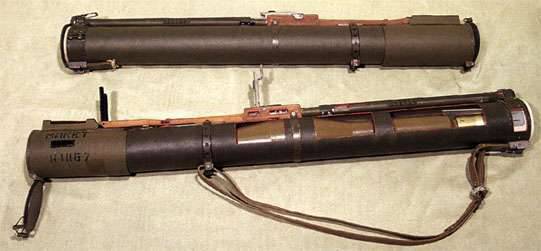
On the outer plastic pipe RPG-22 also has detailed instructions for use. This, of course, does not mean that practical skills are not needed for the effective use of this munition.
Bringing the RPG-22 from the combat position back to the marching position is not allowed. As in the case of the RPG-18, unencumbered grenades, brought into action, must be fired towards the enemy or in a safe direction.
Production of RPG-22 "Net" in Russia lasted until the year 1993. In the past, RPG-22 was offered for export by Bulgaria, this country received a license to manufacture RPG-22 in the middle of 80's. In Bulgaria, rocket-propelled grenades were manufactured at the Arsenal enterprise in the city of Kazanlak.
According to the testimony of the military personnel who participated in the hostilities, the RPG-22 "Netto" is a very reliable and effective ammunition. However, she inherited some of the shortcomings of the RPG-18. During local conflicts, the RPG-22 demonstrated that it is capable of striking modern tanks only on board. From the experience of the “first Chechen one”, it turned out that for the destruction of T-72 and T-80, equipped with dynamic protection blocks, it was necessary to get 10 hits from RPG-18 and RPG-22. Much better data jet grenades proved themselves during the storming of buildings. The cumulative RPG-22 warhead was quite capable of breaking through a half-meter-high reinforced concrete wall.
In 1985, the Agleni RPG-26 entered service. As well as other, earlier models of disposable rocket grenades, it was developed at NPO Basalt. The main goal in creating the RPG-26 was to facilitate the transfer of the grenade to the combat position, adding the ability to transfer back from the combat position to the traveling one, reducing the size of the combat position, as well as improving the effectiveness of hitting targets.
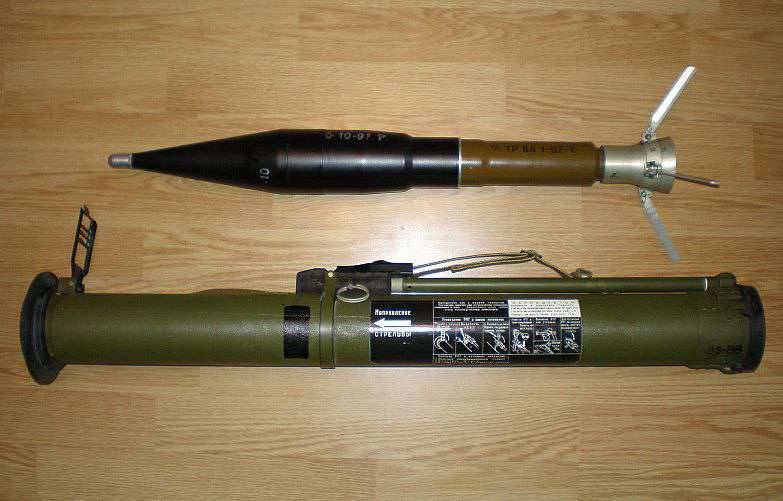
The caliber of the RPG-26 remained the same as in the RPG-22 - 73 mm. But thanks to the use of a more advanced jet engine, the initial speed of the grenade increased to 145 m / s, and, accordingly, the direct shot range increased to 170 meters. Improving the design of the cumulative charge allowed to bring armor penetration - up to 440 mm. And most importantly, the time for the transfer of a rocket grenade from a marching to a combat position was halved. At the same time, the mass of RPG-26 as compared to RPG-22 increased only by 200 gr. The length of the RPG-26 in the combat position is - 770 mm.
The design of the RPG-26 has become much simpler, the launching device is a monoblock fiberglass pipe. From the ends, the pipe is closed with rubber caps, which are destroyed when fired. To bring the RPG-26 into a combat position, a safety check is retrieved. When casting sights in the combat position, the trigger mechanism is cocked, and a shot can be fired by pressing the trigger. If it is necessary to transfer the grenade back from the combat to the marching position, when lowering the sight sight in the horizontal position and fixing it with a check, the trigger mechanism is removed from the combat platoon.
At present, the Agleni RPG-26 is in service with the motorized rifle and airborne units of the Russian army. Being quite inexpensive and at the same time reliable and effective ammunition, this rocket grenade ensures the defeat of modern battle tanks in the side. With it, you can also destroy manpower and light field fortifications of the enemy.
Further development of the RPG-26 "Aglena" was the anti-tank grenade RPG-27 "Tavolga". It was developed by the NGO Basalt and entered service in 1989 year. The main goal in creating the RPG-27 was to ensure the defeat of modern tanks covered with dynamic armor from any direction.
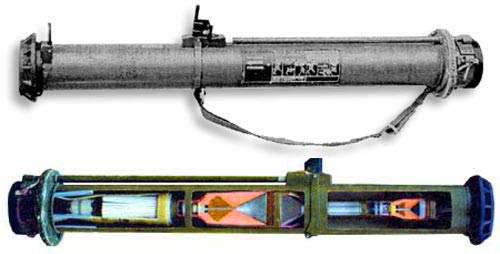
Structurally, the RPG-27 repeats the RPG-26 with a trigger device, sighting devices and a trigger mechanism. The main difference is the use of a tandem warhead in the new rocket grenade, unified with the warhead grenade PG-7BP for the reusable RPG-7 rocket launcher. This grenade is able to penetrate 600-mm armor, covered with dynamic protection. The initial departure speed of the RPG-27 grenades from the launch tube is about 120 m / s.
The RPG-27 caliber has grown to 105 mm, while the weight has increased almost three times compared to the RPG-26 and is 8,3 kg. The length compared to the RPG-26 has become longer by 365 mm. A direct shot range decreased by 30 meters. The increased weight and size is an inevitable price for the multiply increased efficiency of Tavolga. Not so long ago it became known about the development of an upgraded version of the RPG-26 with improved ergonomic parameters and a removable telescopic sight.
In addition to fighting modern armored vehicles, the RPG-27 can be effectively used to destroy enemy manpower in buildings and structures made of reinforced concrete, bricks and in field wooden ground shelters.
But the Vampire RPG-29 became the most breakthrough anti-tank grenade launcher, created in the NPO Bazalt shortly before the collapse of the USSR. This grenade launcher complex consisting of tandem cumulative and thermobaric shots was intended to combat all types of existing and prospective tanks, as well as to destroy enemy manpower and destroy defenses of various types.
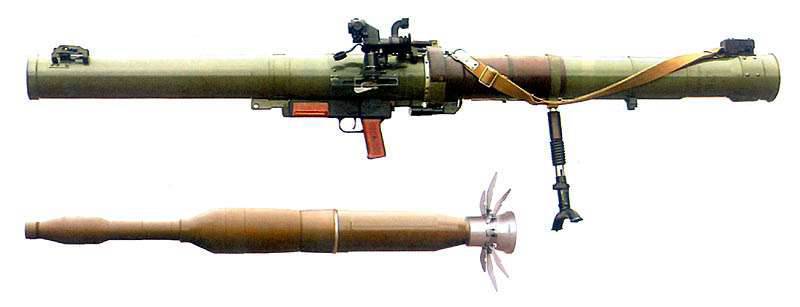
RPG-29 "Vampire" was officially adopted by the Soviet Army in the year 1989. But at that time, the military considered that the existing anti-tank weapons were sufficient, and the mass production of RPG-29 was not established. In addition, for the infantry units, the new-generation grenade launcher was considered too heavy and expensive. The weight of the charged RPG-29 with a sight and a folding bipod is 18,8 kg. With such a mass, its transportation over long distances by one soldier is difficult. The RPG-7 mass with a PG-7BP grenade is approximately two times smaller. It was not taken into account that the range of the RPG-29 direct shot reaches 500 meters, which is twice the shooting range of the PG-7BR tandem grenade from the RPG-7.

When creating a new grenade launcher used the best design solutions, previously implemented in other types of Soviet anti-tank grenade launchers. So from the RPG-7 grenade launcher RPG-29 inherited a tandem warhead grenade PG-7BP. The front combat part of the PG-29В grenade is designed to overcome a dynamic protection unit or a protective screen, after which the more powerful rear warhead directly hits the main armor of the tank. Penetration after overcoming dynamic protection is 600-650 mm.
From the landing RPG-16 borrowed caliber smooth barrel, made detachable for ease of transportation, as well as an electric trigger mechanism with engine ignition grenades electrically. In the middle of the grenade launcher is a trigger with a fire control knob. On the upper part of the trunk are duplicating mechanical sights - rear sight and front sight.
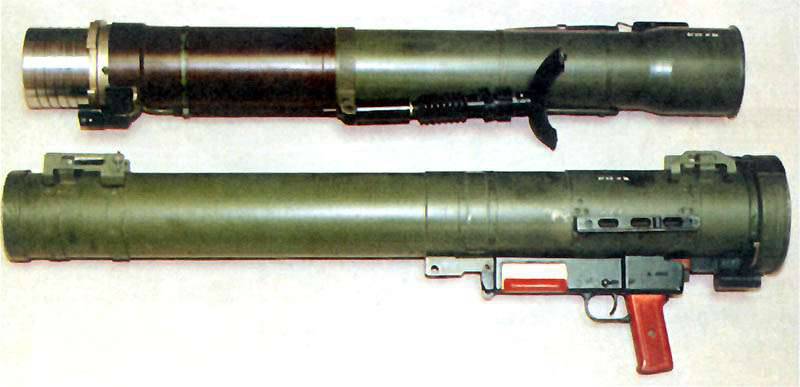
When disassembling the RPG-29 into two parts, the trigger mechanism and the sight remain on the “front” half of the grenade launcher. The grenade launcher in the stowed position is— 1 meter, in combat - 1,85 meter. The calculation of the RPG-29 consists of two people. For carrying a grenade launcher and ammunition are two knapsacks. In one of them is placed a grenade launcher, in the other - 3 rocket launchers.
Unlike other domestic grenade launchers, the PG-29В grenade used in the RPG-29 is a purely reactive, propelling charge in the composition of the shot is absent. The burning time of the powder in a jet engine is designed so that it is completed before the PG-29В grenades exit the barrel. The grenade accelerates along a sufficiently long barrel to 255 m / s and stabilizes in flight with eight folding blades. This scheme allows to reduce the impact of the shot products on the grenade launcher, to simplify the design of the grenade launcher and ammunition, as well as to facilitate aiming, since in flight the PG-29В grenade does not have an active part of the jet engine.

The shot included in the RPG-29 ammunition with the TBG-29V thermobaric grenade is comparable in effectiveness with the 122-mm artillery projectile. The solid radius of destruction of TBG-29В is 10 meters, and the armor penetration when firing at lightly armored vehicles is up to 20 mm. However, the shot on the modern tank thermobaric ammunition is unlikely to pass for the combat vehicle without a trace. In case of a frontal projection, it is very likely that the sights, observation devices and tank armament will be damaged.
A well-prepared calculation can do up to 4 sighting shots per minute. The considerable mass and dimensions of the RPG-29 make it justified to use it from the machine, this greatly simplifies the conditions of the calculation and increases the accuracy of shooting.
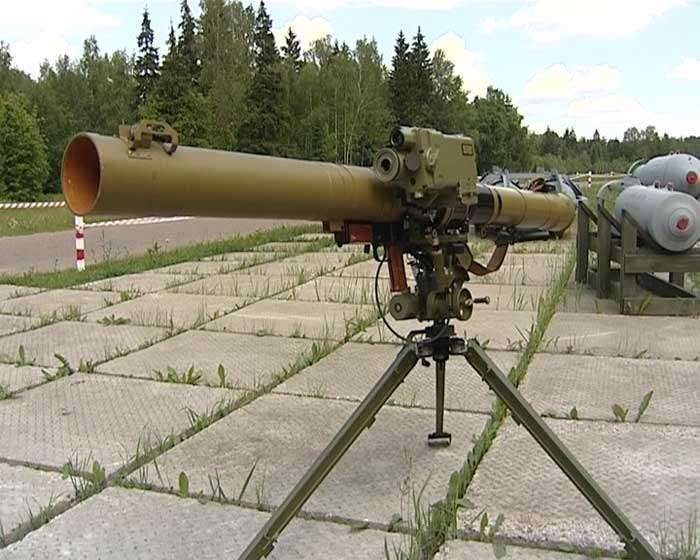
The 1P38 telescopic sight with 2,7 magnification is used as a standard sighting device. The RPG-29 hand-held anti-tank grenade launcher can be completed with the 1PN51-2 night-sight. Approximately 10 years ago as part of the modernization of the Vampire grenade launcher, a combined optical-electronic sight 2Ц35 was developed for it.
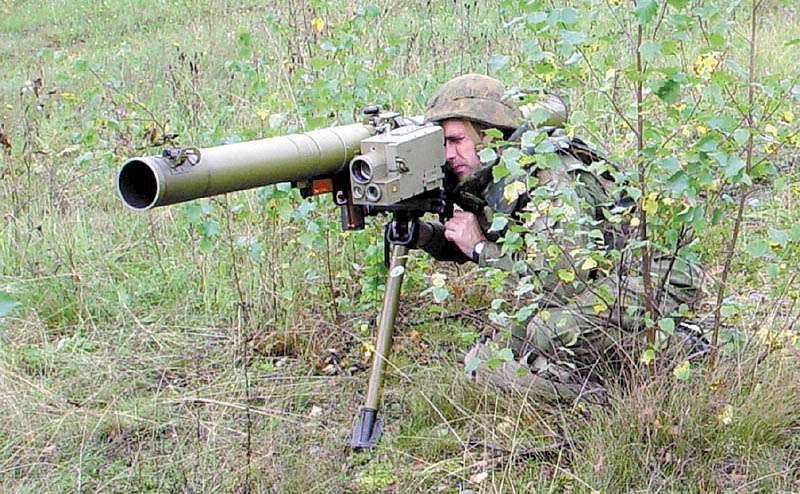
This device is mounted instead of a standard sight on an RPG-29 grenade launcher mounted on a machine and due to the presence of a laser rangefinder, it can measure the distance to the target day and night with high accuracy and calculate the necessary corrections when shooting at a distance of 1000 meters.
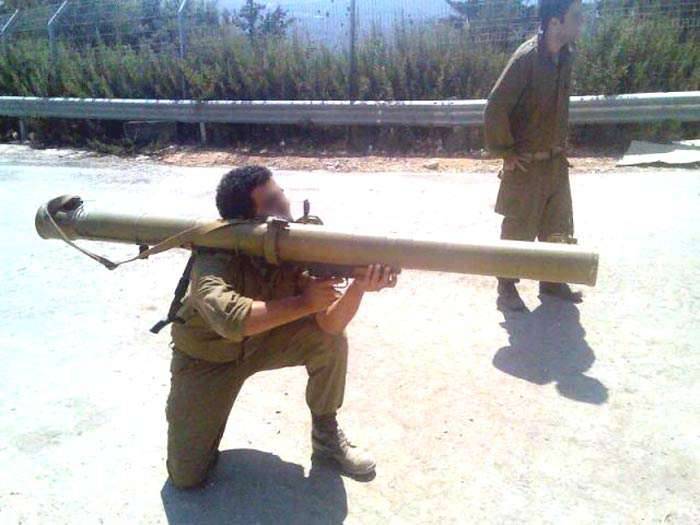
Despite the high combat effectiveness against Israeli Merkava tanks during the Second Lebanon War in 2006, the number of anti-tank RPG-29 “Vampire” grenade launchers in the Russian army is currently minimal. Apparently, most of the produced grenade launchers are exported. Recently, RPG-29 can be repeatedly seen in images from the combat zone in Syria and Iraq. Also, a number of grenade launchers with PG-29B shots are in service with Mexican paratroopers.
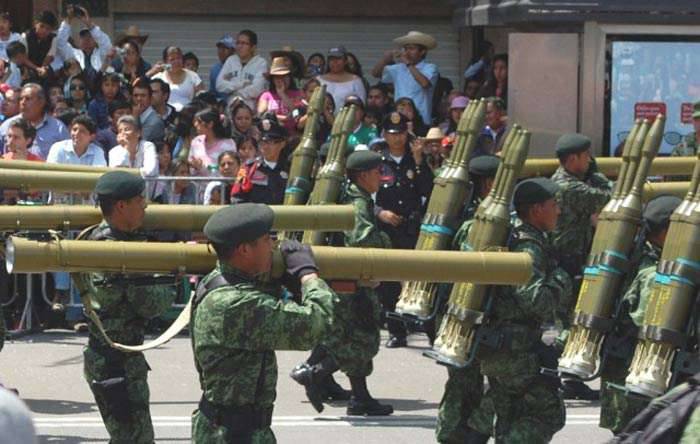
At the moment, Russia occupies a leading position in the field of creation and production of reusable anti-tank grenade launchers and rocket-propelled grenades attached to servicemen as a non-standard means of strengthening anti-tank defense. During the years that have passed since the collapse of the USSR, the specialists of the scientific and production association "Basalt" created a number of highly efficient grenade launchers, anti-tank and assault rocket grenades, but this is already the topic for the next publication.
Based on:
http://world.guns.ru
http://dokwar.ru
http://bazalt.ru/close_in_weapon_systems/
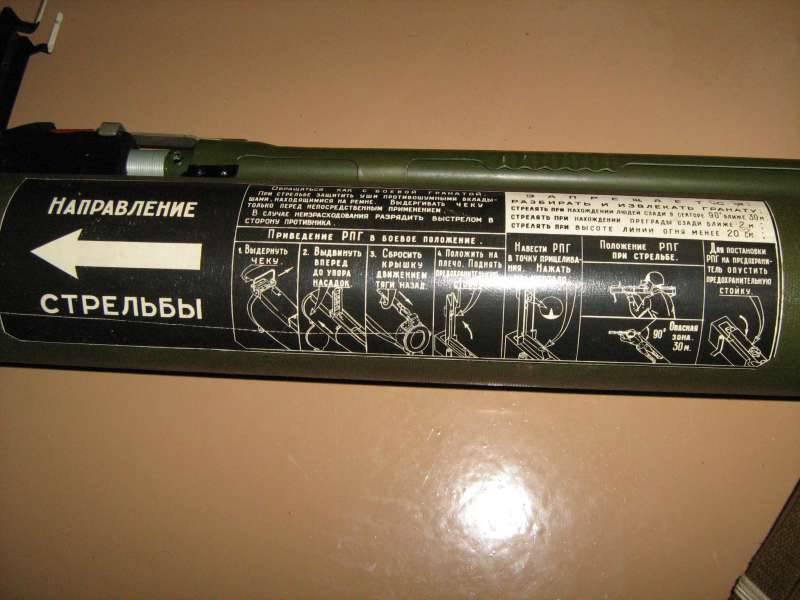
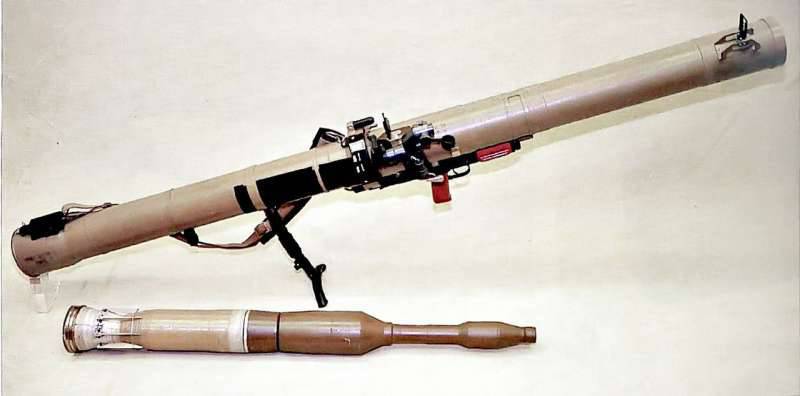
Information